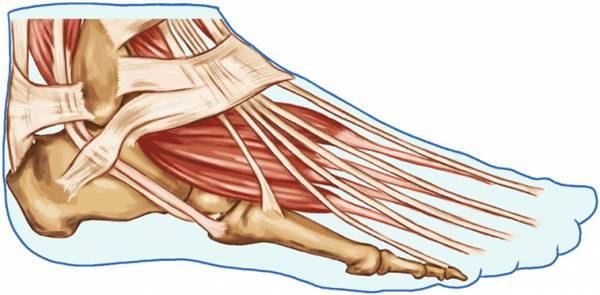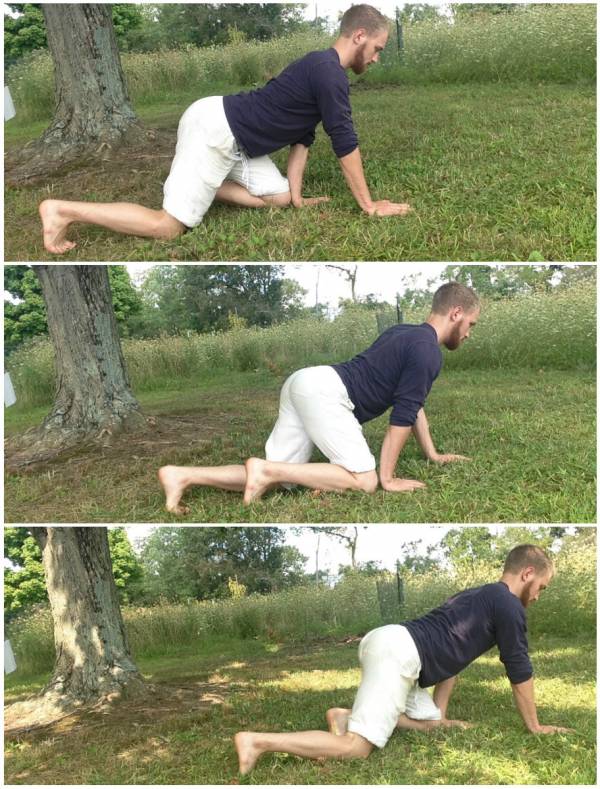As an athlete, you’re built from the ground up. The body is a vastly interconnected system, and your feet are the foundation. So if you’re struggling to push past a plateau – your feet may be your missing link. Despite the tremendous importance of intrinsic foot strength, most athletes unwittingly sacrifice performance and set themselves up for injury by neglecting their toes.
It’s surprisingly easy to improve your foot strength, and this leads to huge improvements in performance. I’m going to show you just how important the feet are for performance and health. I’ll also share some surprisingly simple ways to enhance your foundation of intrinsic foot strength.
The Role of the Feet
Show of hands: any bipeds out there? If you’re reading this, odds are good you spend a fair amount of time upright on two feet when training. Those feet do more than just hold you up. The complex structure of the human foot – 26 bones and more than 100 muscles, tendons, and ligaments – makes it ideal as a shock absorber, locomotor, and structural support. Not to mention, a major source of sensory input.
“The feet effectively act as a bottleneck for speed, strength, and power. So, you want to move better? Then fix your feet.”
A recent study in The Journal of Physical Therapy Science found that a simple foot strengthening routine could lead to significant improvements in running speed, horizontal and vertical jump distance, and strength.1 The feet effectively act as a bottleneck for speed, strength, and power. So, you want to move better? Then fix your feet.
The Foot Bone’s Connected to the…
With such a complex structure and a multitude of functions, it’s clear that your feet play a key role in performance and health. The trick comes when they aren’t quite up to snuff. Years of moving in shoes on flat floors can weaken the intrinsic muscles of the feet until they function less like feet and more like bags of pudding. If your feet don’t work like feet, you can bet you’ll pay the price.
The body is a master of compensation. When the feet aren’t able to effectively bear a load, then other tissues and structures are forced to pick up the slack. This sets the stage for big-time overuse injuries.2
“The fascial system of the body connects the soles of the feet all the way to the head, through the muscles of the legs, back, and neck.”
What areas are most prone to compensation? Think knees, low back, and neck. When the feet take a vacation, the upstream effects can be crippling. How many former runners do you know with bad knees?
You may also notice tension in the calves and hamstrings, even your neck. The fascial system of the body connects the soles of the feet all the way to the head, through the muscles of the legs, back, and neck. After all, if the feet aren’t supporting you, something else has to.
So, if rebuilding healthy feet is so easy and so beneficial, what are we waiting for? Let’s explore a few primary methods to restore natural function in the feet.

1. Ball Roll
If you haven’t spent much time moving your feet, they may have taken on an unnatural rigidity. Due to our old friend the SAID principle – specific adaptation to imposed demand – your body will adapt to the conditions it encounters most frequently. Spend much time in shoes on flat surfaces? You’ll have flat, shoe-shaped feet.
The ball roll is a basic tool to unravel tension in the feet and mobilize the skeletal structure. To do this, spend 60-90 seconds rolling a lacrosse ball under each foot as a simple warm up.
2. Improving Flexion
This exercise, influenced by the work of sports chiropractor Dr. Andreo Spina, has two parts. Begin in standing, and then:
- Press your outside four toes down, and slowly attempt to raise just the big toe on each foot. Don’t be surprised if you encounter cramping in the foot. That’s a sign from the nervous system that you haven’t mastered control in this movement. Perform this 12-15 times.
- Reverse the pattern. Press the big toes down into the ground and attempt to raise the lateral four toes. Say “hello” to your arches for me! Even if you can’t yet lift those toes, focus on the intention of lifting them to rebuild your neuromuscular control. Again aim for 12-15 repetitions.
The more frequently you go through these movements (barring pain and fatigue, of course), the sooner you will regain natural function in your intrinsic foot musculature.
3. Six-Point Crawl
The six-point crawl is a fantastic tool to restore the foot’s ability to drive your movement. It’s not enough to strengthen and mobilize the feet. You need to re-teach them how to play nicely with the rest of the body.
- Assume a stance on hands and knees and tuck your toes under. That part is crucial.
- Drive each step from the toes of the foot. Think about the flip-flop point between your big and second toes. Imagine pressing from that point, and you’ll be amazed at the force you can generate.
- Aim for 1-3 minutes of crawling.

4. Barefootin’
The best way to build feet that work like feet is to treat them like feet. Think SAID principle once again. If the Vibram FiveFinger lawsuit taught us anything it’s that you can’t jump into minimalist walking and running. You need to ease your way into spending more time barefoot.
“Remember, you’re only as strong as your weakest link. Without a focus on your feet, you’ll sacrifice speed, strength, and power.”
You might start with ten minutes per day walking barefoot in the grass. Gradually begin to explore different terrain and longer periods of time. Don’t jump straight to walking on hot coals. Please. But do make a habit of gradually freeing your feet from the confines of shoes. Ever spent time in a cast? That same atrophy occurs in the feet when we keep them shod. And just like you need to slowly regain strength the gym, restoring your foundation will take time.
Build From the Foundation
Remember, you’re only as strong as your weakest link. Without a focus on your feet, you’ll sacrifice speed, strength, and power. It’s an easy process to rebuild, so kick your shoes off and stay awhile.
More Like This:
- Build Strong and Stable Ankles for a Strong and Stable Body
- Breaking Your Fall: Gait Mechanics for Injury Prevention
- Barefoot Basics: How to Regain Your Footing
- New on Pulse Beat Fit Today
References:
1. T. Hashimoto and K. Sakuraba, “Strength Training for the Intrinsic Flexor Muscles of the Foot: Effects on Muscle Strength, the Foot Arch, and Dynamic Parameters Before and After the Training.” Journal of Physical Therapy Science. 2014;26(3):373-376. doi:10.1589/jpts.26.373.
2. P. Levinger, et al., “A comparison of foot kinematics in people with normal- and flat-arched feet using the Oxford Foot Model,” Gait & Posture. 2010; 32 (4);519-523.
Photos 1 and 2 courtesy of Shutterstock.






